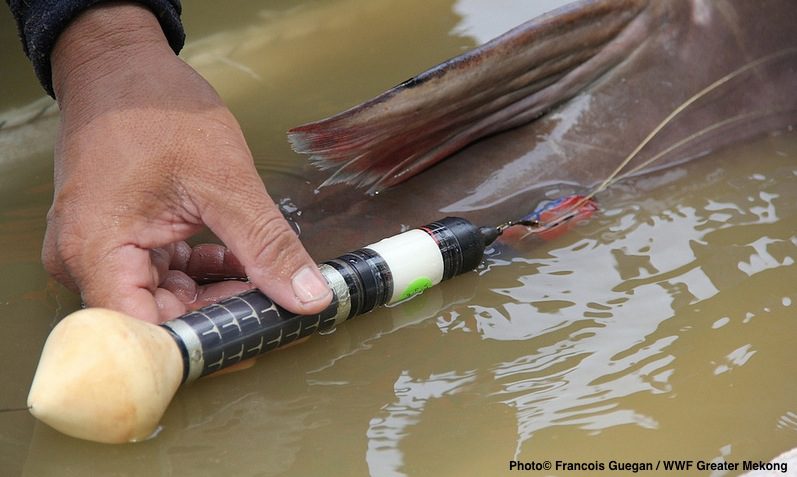


One of the biggest mysteries of the endangered Mekong giant catfish (Pangasianodon gigas) is where they migrate to spawn. To test the feasibility of tracking the movements of these massive fish, FISHBIO and the World Wide Fund for Nature (WWF) collaborated on a pilot study to tag captive giant catfish with Pop-up Satellite Archival Tags (PSATs). WWF’s Greater Mekong Program is curious whether this telemetry technology could be used to investigate giant catfish migration patterns and key habitat use.

This pioneering project was conducted using hatchery-raised fish at the Nongkhai Inland Fisheries Research and Development Center in Thailand. FISHBIO attached PSATs manufactured by Desert Star Systems® to two different Mekong giant catfish just below the dorsal fin, using a modification of the “through-back method” used to apply tags to adult fishes in California. The fish were held in a small reservoir for four months after tagging to test both the location accuracy of the satellite tags and the efficacy of the attachment method. After the scheduled pop-up release of the tags, we returned to the reservoir to recapture the fish and inspect their health. The tagging method proved successful, as the tags stayed on the fish until their programmed release, and the fish’s tagging wounds had mostly healed from the procedure. However, technical aspects of tag data collection and transmission need to be investigated further before attempting this method with wild fish in the Mekong River.